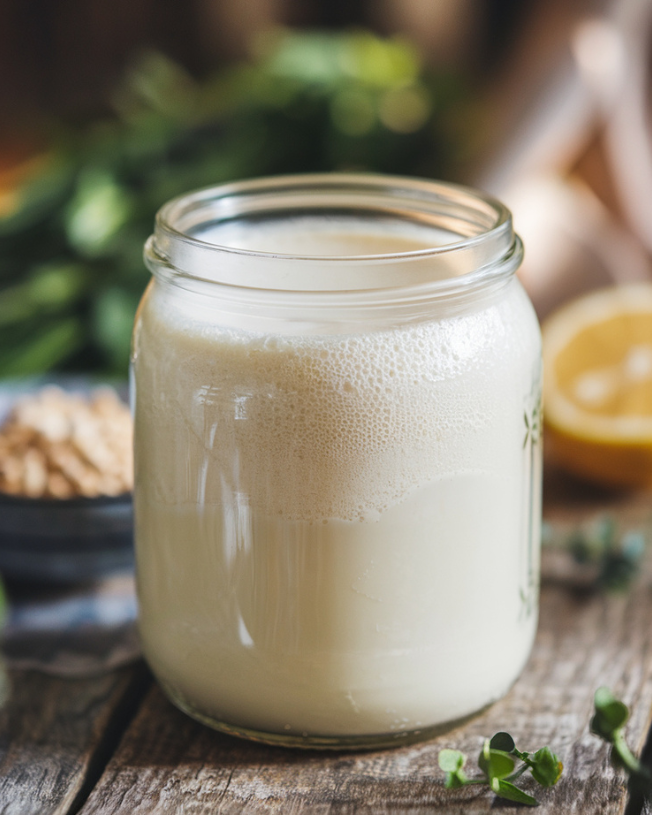Are you fed up with the same old dairy products that leave you feeling bloated and uncomfortable? Well, let’s talk about a game-changer in the world of fermented foods – raw kefir! So, what is Raw kefir? It’s a probiotic powerhouse that’s not just another trendy health food; it’s a centuries-old elixir making a big comeback.
Imagine a creamy, tangy drink that tastes amazing and supports your gut health like nothing else. Raw kefir is loaded with beneficial bacteria and yeast that can work wonders for your digestion and give your immune system a nice boost.
In this blog post, we’ll dive deep into everything you need to know about raw kefir. We’ll uncover its fascinating origins, explain how people make it, and explore why it has earned a place in health-conscious kitchens worldwide. From its amazing nutritional benefits to fun ways to incorporate it into your diet, we’ve got you covered ready to unlock the magic of Raw kefir. Let’s dive in!
What Is Raw Kefir?
What is Raw kefir? is a fermented dairy drink that has gained widespread popularity for its unique taste and numerous health benefits. Made from unpasteurized milk, raw kefir preserves all the natural enzymes and beneficial bacteria found in raw milk. You make this probiotic-packed drink by adding kefir grains – a symbiotic mix of bacteria and yeast – to raw milk and letting it ferment for 24 to 48 hours.
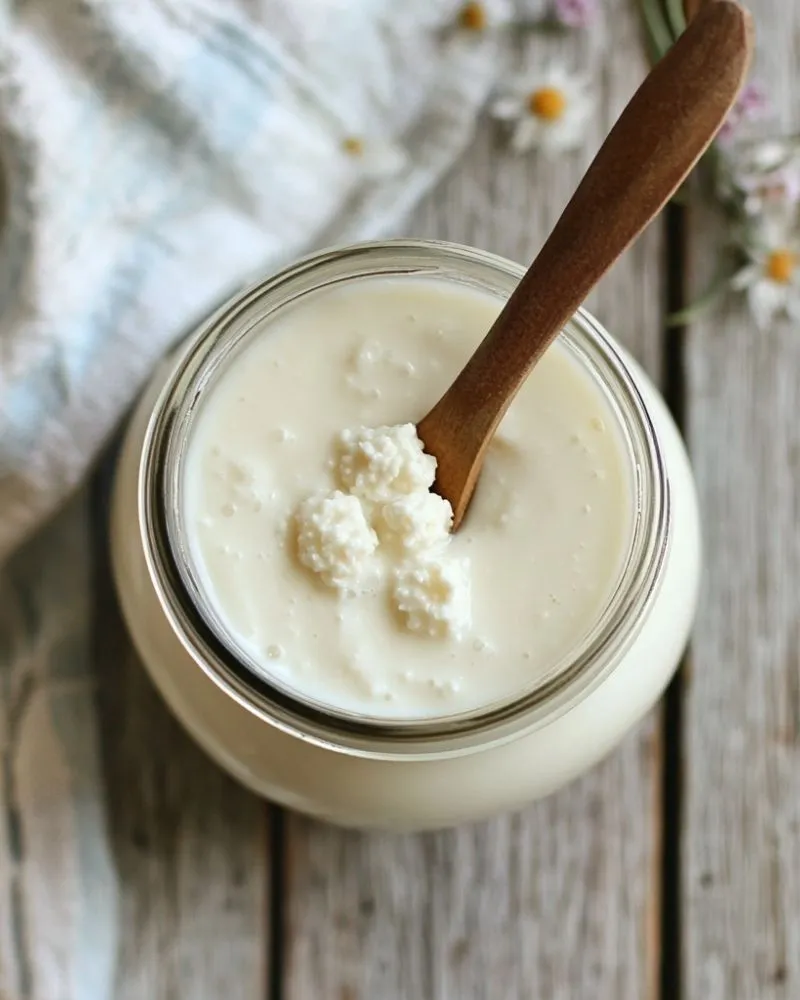
The Difference Between Raw Kefir and Raw Milk
While Raw kefir and Raw milk both come from unpasteurized sources, the fermentation process sets raw kefir apart. During fermentation, the microorganisms in kefir grains consume the milk’s lactose, producing lactic acid and other compounds. This process not only gives raw kefir its tangy flavor but also boosts its probiotic content and health benefits, making it more than just a simple dairy product.
Health Benefits of Raw Kefir
People celebrate raw kefir for its remarkable health benefits. The fermentation process enhances the bioavailability of nutrients and fosters a rich ecosystem of probiotics that promote gut health. These probiotics can aid digestion, strengthen the immune system, and even alleviate certain digestive disorders. Additionally, you can make raw kefir with different types of raw milk, such as cow, goat, or sheep milk, each imparting its unique characteristics to the final product.
To learn more about the science behind its benefits, check out this Wikipedia page on raw milk.
By understanding what is raw kefir? and its health benefits, you can appreciate why this ancient drink is making such a strong comeback in health-conscious communities worldwide!
How do you make raw kefir?
The Fermentation Process
People often wonder, what is Raw kefir? A unique fermentation process transforms raw milk into a probiotic-rich drink. The process begins with high-quality raw milk, which remains unpasteurized and unhomogenized. You add kefir grains – a symbiotic culture of bacteria and yeast (SCOBY) – to the milk. These grains, resembling small cauliflower florets, contain a diverse mix of beneficial microorganisms.
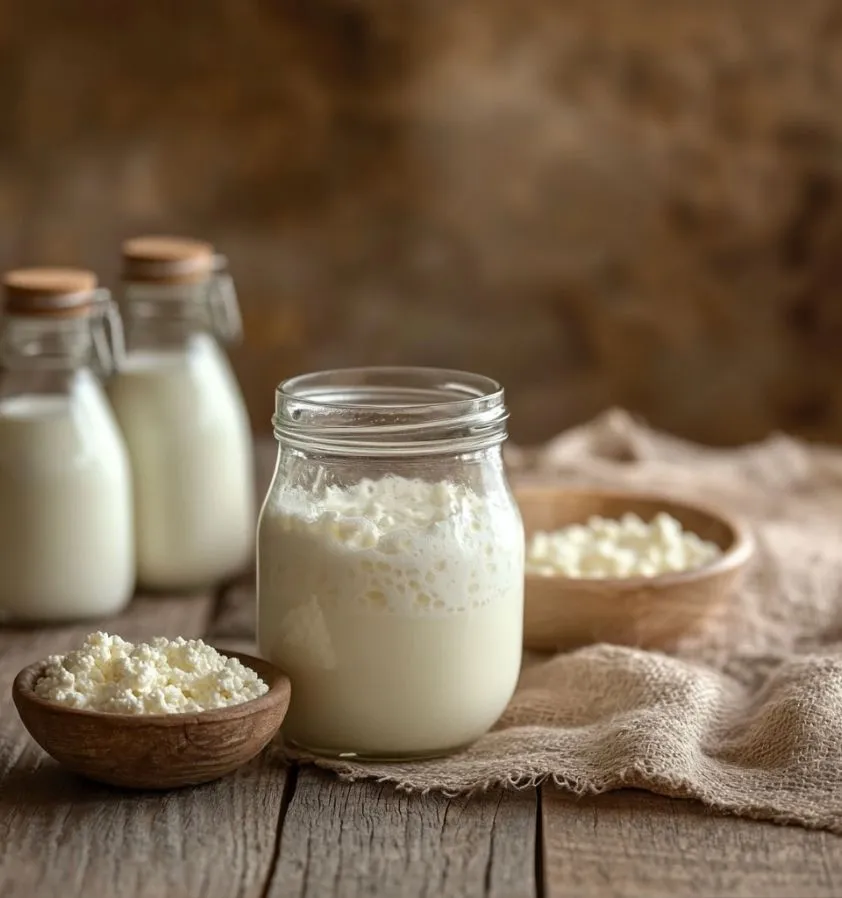
Culturing and Straining
The milk and kefir grains are left to ferment at room temperature for about 24 hours. During this time, the microorganisms in the kefir grains consume the milk’s lactose, ultimately producing lactic acid and other beneficial compounds. This process thickens the milk and gives raw kefir its characteristic tangy flavor.
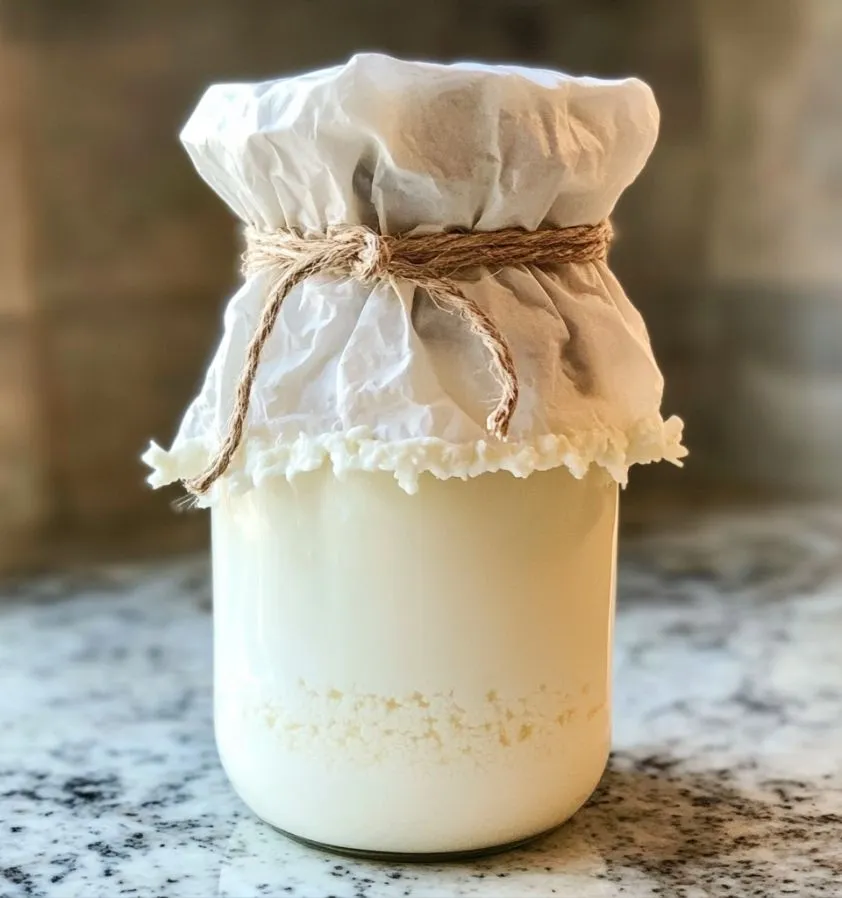
Once fermentation finishes, strain the mixture to separate the kefir grains from the liquid. Then, you can reuse the grains to make more kefir, while the fermented milk becomes raw kefir, ready for consumption or further flavoring.
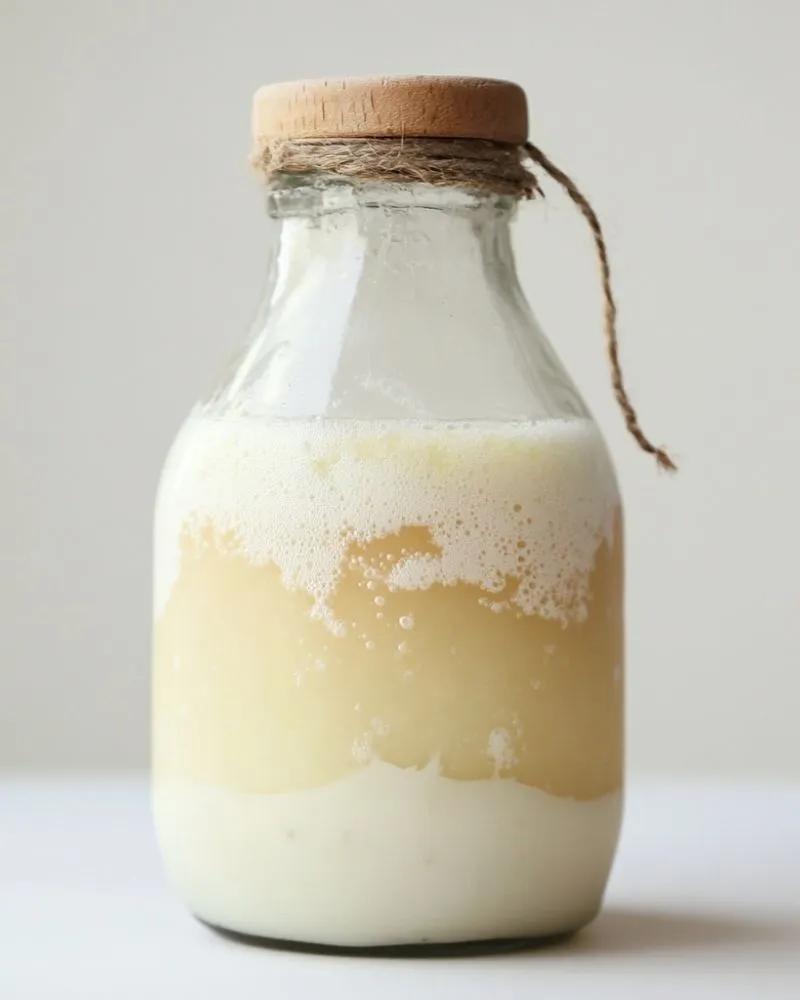
Variations in Production
Some producers may adjust fermentation times or temperatures to achieve different flavors or consistencies. Additionally, you can make raw kefir with different types of raw milk, such as cow, goat, or sheep milk, each imparting its unique characteristics to the final product.

What is Raw Kefir?
Ingredients
- 1 –2 tablespoons kefir grains live culture
- 4 cups raw milk cow, goat, or sheep milk, or a non-dairy alternative like coconut milk
Equipment:
- Glass jar 1-quart size
- Breathable cloth or coffee filter
- Rubber band or jar lid
- Non-metallic strainer
- Bowl for straining
Instructions
Prepare the Jar:
- Place 1–2 tablespoons of kefir grains into a clean glass jar.
Add Milk:
- Pour 4 cups of raw milk into the jar, leaving about an inch of space at the top.
Cover and Ferment:
- Cover the jar with a breathable cloth or coffee filter and secure it with a rubber band.
- Let the jar sit at room temperature (68–75°F or 20–24°C) for 24 hours, away from direct sunlight.
Check Consistency:
- After 24 hours, check the kefir. It should have thickened slightly and smell tangy. If it’s too thin, let it ferment for another 6–12 hours.
Strain the Kefir:
- Place a non-metallic strainer over a bowl and pour the kefir through it to separate the grains.
Store and Enjoy:
- Transfer the strained kefir to a clean jar or bottle and refrigerate.
- Rinse the kefir grains (optional) and reuse them for your next batch.
Video
Notes
- Milk Options: Use raw cow, goat, or sheep milk for traditional kefir. For a dairy-free version, try coconut milk or almond milk (note: non-dairy options may require adjusting fermentation time).
- Fermentation Time: In warmer climates, fermentation may take less than 24 hours. In cooler environments, it may take longer.
- Second Fermentation: For added flavor, let the strained kefir sit at room temperature for another 6–12 hours before refrigerating.
- Storage: Fresh kefir lasts up to 1 week in the fridge. Kefir grains can be stored in a small amount of milk in the fridge for up to 1 week if you’re taking a break.
- Troubleshooting: If your kefir tastes too sour, reduce fermentation time. If it’s too thin, use more grains or ferment longer.
HOW IS IT GOOD FOR YOU?
Probiotic Powerhouse
Raw kefir is a nutritional powerhouse, packed with beneficial bacteria and yeasts that can significantly improve your gut health. These probiotics help balance your digestive system, boost your immune function, and may even alleviate symptoms of certain gastrointestinal disorders. Moreover, the diverse microbial ecosystem in raw kefir is more potent than that found in yogurt, making it a superior choice for those seeking maximum probiotic benefits.
Nutrient-Dense Superfood
Beyond its probiotic content, raw kefir is rich in essential nutrients. It’s an excellent source of high-quality protein, calcium, and B vitamins, particularly B12, which is crucial for energy production and nervous system function. The fermentation process also makes these nutrients more bioavailable, meaning your body can absorb and utilize them more efficiently than from non-fermented dairy products.
Digestive Aid
For those who struggle with lactose intolerance, raw kefir can be a game-changer. The fermentation process breaks down much of the lactose in milk, making it easier to digest for many people who typically avoid dairy. Additionally, the probiotics in kefir can help improve overall digestive function, potentially alleviating issues like bloating, constipation, and diarrhea.
Now that we’ve explored the health benefits of raw kefir, let’s take a closer look at its nutritional composition to understand why it’s such a valuable addition to your diet.
More Culterd Dairy Recipes You’ll Love
- Homemade Frozen Yogurt Bars
- Raw Milk Yogurt
- Fig Tart
- Homemade Yogurt Cheese
- Boost Your Day with Cottage Cheese and Fruit
The Nutritional Breakdown:
Raw kefir is a nutritional powerhouse, packed with essential nutrients that contribute to overall health and well-being. A typical 8-ounce (240 ml) serving of raw kefir contains an impressive array of vitamins, minerals, and beneficial compounds.
Protein and Amino Acids
Raw kefir is an excellent source of high-quality protein, providing about 8-11 grams per serving. This protein content includes all essential amino acids, making it a complete protein source. The proteins in raw kefir are easily digestible, supporting muscle growth and repair.
Calcium and Other Minerals
One serving of raw kefir provides approximately 30% of the daily recommended intake of calcium. It’s also rich in other minerals such as phosphorus, magnesium, and zinc, which are crucial for bone health, energy metabolism, and immune function.
Vitamins
Raw kefir is a good source of B-complex vitamins, including B12, B1 (thiamine), and B2 (riboflavin). These vitamins play vital roles in energy production, nervous system function, and cell metabolism. Additionally, it contains vitamin K2, which is essential for bone and cardiovascular health.
Probiotics
Perhaps the most notable nutritional aspect of raw kefir is its probiotic content. Raw kefir contains a diverse range of beneficial bacteria and yeasts, with some estimates suggesting up to 61 different strains. These probiotics contribute to gut health, immune function, and overall well-being.
Now that we’ve explored the nutritional profile of raw kefir, let’s look at the different flavors available and how you can incorporate this nutritious drink into your diet.
OUR Three FLAVORS OF WHOLE RAW KEFIR
Our whole raw kefir comes in three delicious flavors, each offering a unique taste experience while maintaining the probiotic benefits of raw kefir.
Original Plain
Our original plain flavor showcases the natural tanginess of raw kefir. It’s perfect for those who appreciate the authentic taste of fermented raw milk. You can enjoy this versatile option on its own or use it as a base for smoothies and other recipes.
Vanilla Bean
For those with a sweet tooth, our vanilla bean flavor offers a subtle sweetness that complements the tangy notes of raw kefir. Real vanilla beans give the kefir a rich, aromatic flavor that’s both comforting and indulgent.
Berry Blast
Our berry blast flavor combines the probiotic goodness of raw kefir with a medley of fresh berries. This fruity option is perfect for those who prefer a more vibrant taste profile. It’s a refreshing way to enjoy the health benefits of raw kefir while satisfying your craving for something sweet and tart.
We craft each flavor carefully to preserve the nutritional integrity of raw kefir while offering a variety of taste options to suit different preferences. Whether you’re a raw kefir purist or looking for a more flavored experience, our three options ensure there’s something for everyone.
Now that you’re familiar with our flavor offerings, let’s explore some creative ways to incorporate raw kefir into your daily diet.
CREATIVE WAYS TO USE RAW KEFIR
Smoothies and Shakes
Raw kefir’s creamy texture and tangy flavor make it an excellent base for smoothies and shakes. Blend it with your favorite fruits, vegetables, and superfood powders for a nutrient-packed drink. Try combining raw kefir with berries, spinach, and a scoop of protein powder for a post-workout shake that’s both refreshing and beneficial for muscle recovery.
Salad Dressings and Marinades
The probiotic-rich raw kefir can elevate your salads and marinades. Use it as a base for creamy dressings, mixing in herbs, spices, and a touch of honey or lemon juice. For marinades, combine raw kefir with garlic, herbs, and spices to tenderize and flavor meats or vegetables before grilling or roasting.
Baking and Cooking
Incorporate raw kefir into your baking recipes as a substitute for buttermilk or yogurt. It adds moisture and a subtle tang to pancakes, muffins, and quick breads. In savory dishes, use raw kefir to create creamy sauces or as a base for soups, adding depth and a probiotic boost to your meals.
Overnight Oats and Parfaits
Prepare a nutritious breakfast by soaking oats in raw kefir overnight. The fermentation process makes the oats more digestible while infusing them with probiotics. Layer raw kefir with granola and fresh fruits for a delicious and healthy parfait that’s perfect for a quick breakfast or snack.
PRIMAL KITCHEN SAYS YES TO HEALTHY RAW CREAM
Raw Cream: A Nutritional Powerhouse
Raw cream, a key component in Primal Kitchen’s offerings, is a testament to the brand’s commitment to wholesome, nutrient-dense foods. Unlike pasteurized cream, raw cream retains all its natural enzymes and beneficial bacteria, making it a superior choice for health-conscious consumers.
The Benefits of Raw Cream
Raw cream is rich in fat-soluble vitamins A, D, K2, and E, which are crucial for bone health, immune function, and cellular repair. It also contains conjugated linoleic acid (CLA), a fatty acid known for its potential anti-inflammatory and weight management properties. The natural probiotics in raw cream support gut health, potentially improving digestion and boosting immunity.
Primal Kitchen’s Approach
Primal Kitchen prioritizes sourcing raw cream from grass-fed cows, ensuring a higher nutritional profile and better taste. This aligns with their philosophy of using whole, unprocessed ingredients to create products that nourish the body and support overall health.
Now that we’ve explored the benefits of raw cream, let’s delve into another beloved raw dairy product that’s gaining popularity worldwide.
WHY IS RAW MILK CHEDDAR CHEESE LOVED EVERYWHERE?
The Unique Appeal of Raw Milk Cheddar
Raw milk cheddar cheese has gained a devoted following worldwide, and for good reason. Indeed, its unique flavor profile and potential health benefits set it apart from pasteurized alternatives. The use of unpasteurized milk in the cheese-making process preserves beneficial enzymes and bacteria, ultimately resulting in a more complex and robust taste.
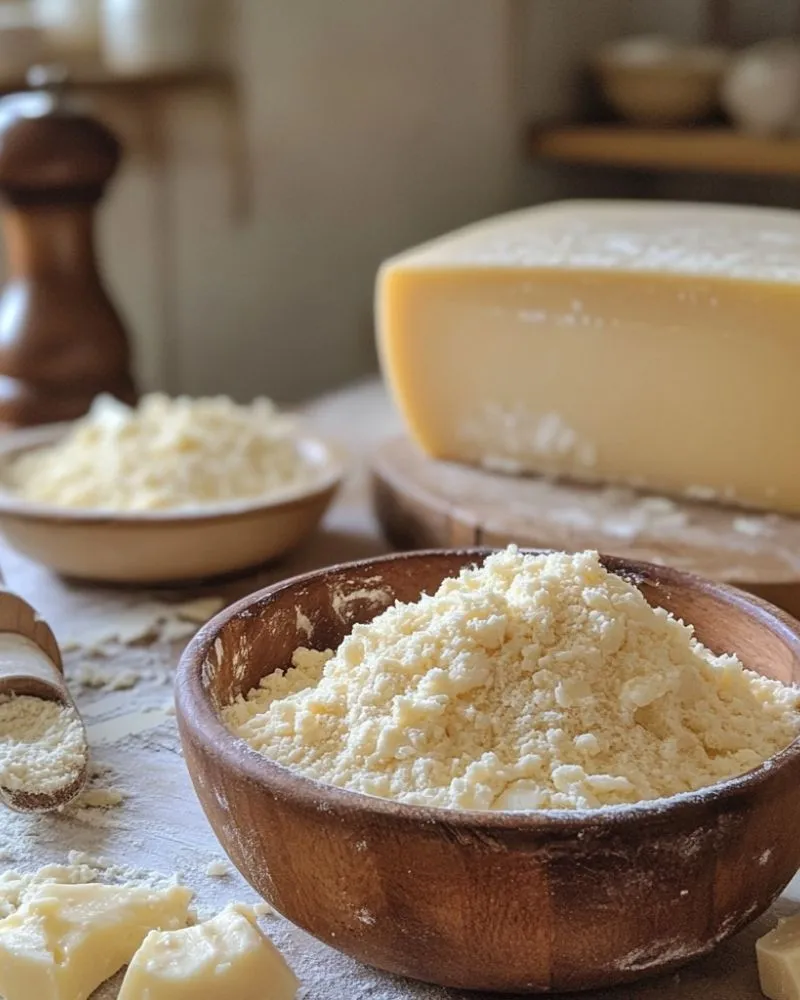
Flavor and Texture
One of the main reasons raw milk cheddar is so popular is its rich, nuanced flavor.The natural enzymes present in raw milk contribute to a sharper, more pronounced taste that develops and intensifies as the cheese ages. This complexity often comes across as earthy, grassy, or even nutty, depending on the specific production methods and aging process.
Nutritional Benefits
You’ll love raw milk cheddar for its potential nutritional benefits, too! It retains more of the natural vitamins and minerals found in milk, particularly fat-soluble vitamins like A, D, E, and K. Plus, the beneficial bacteria in raw milk cheddar could help with digestion and strengthen your immune system, though we still need more research to fully understand these effects.
Artisanal Appeal
Small-scale, artisanal cheese makers often produce raw milk cheddar, using traditional methods and top-quality ingredients. This connection to craftsmanship and local production resonates with consumers seeking authentic, minimally processed foods.
Conclusion
Raw kefir is a nutritious and versatile fermented dairy product that offers numerous health benefits. Specifically, made through a traditional fermentation process using kefir grains, this probiotic-rich beverage supports digestive health, boosts immunity, and provides essential nutrients. With its creamy texture and tangy flavor, you can enjoy raw kefir on its own or add it to various recipes, making it a tasty and healthy addition to your diet.
Whether you choose to savor Primal Kitchen’s whole raw kefir in its three delightful flavors or explore creative ways to use it in your cooking, raw kefir is an excellent choice for those seeking to improve their overall well-being. Don’t forget to try raw milk cheddar cheese, another beloved dairy product that complements the benefits of raw kefir. Embrace the goodness of raw dairy and experience the positive impact it can have on your health and culinary adventures.
FAQS
You can use raw cow, goat, or sheep milk for traditional kefir. For a dairy-free option, try coconut milk, almond milk, or soy milk. Keep in mind that non-dairy milks may require adjustments to fermentation time and may not always yield the same consistenc
A slightly yeasty smell is normal, as kefir contains both bacteria and yeast. However, if the smell is overpowering or unpleasant, it could mean over-fermentation. Try reducing the fermentation time or using less kefir grains.
Yes! Drinking kefir daily is generally safe and beneficial for most people. It’s packed with probiotics that support gut health. However, start with small amounts if you’re new to fermented foods to let your body adjust.
Kefir grains need fresh milk, the right temperature (68–75°F or 20–24°C), and time to grow. If they’re not growing, they might be stressed due to chlorinated water, metal utensils, or over-fermentation. Rinse them with filtered water and use fresh milk to revive them.
Healthy kefir grains are white or cream-colored, slightly rubbery, and have a fresh, tangy smell. If they smell foul, turn yellow/brown, or stop fermenting, they may be damaged and need replacing.
Kefir is often considered healthier because it contains more diverse probiotics and is lower in lactose. However, both are excellent for gut health, so it depends on your preferences and dietary needs.
For creamier kefir, use whole milk or add a splash of cream. Ensure proper fermentation time (24 hours) and strain gently to avoid overworking the grains. If it’s still thin, try using more kefir grains or fermenting slightly longer.

